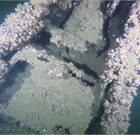
By Victoria Witke Catch and release ethics is credited for the fact that smallmouth bass in Lake St. Clair have been getting larger over the past 50 years, a DNR study finds. Other factors may include warming Great Lakes water temperatures and longer growing seasons due to climate change.

By Kayte Marshall
It only takes a sunny afternoon, a yard full of dead leaves and one bad decision to turn spring cleaning into a wildfire. The DNR and National Fire Protection Association are advising homeowners to fight fire with foresight this year, especially in Northern Michigan where winter storms left massive amounts of flammable debris and dead trees on the ground.

By Clara Lincolnhol Many Ontario farmers acknowledge the positive benefits of sustainable farming practices but don’t have the manpower to actually adopt them, according to a study published by the University of Waterloo.

By Eric Freedman The National Park Service has put another Lake Michigan shipwreck on the National Register of Historic Places.
But most of the boat’s history remains unknown.
More Headlines




